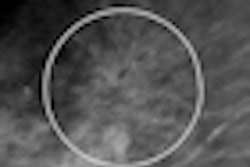Tuesday, November 27 | 3:10 p.m.-3:20 p.m. | SSJ22-02 | Room S403B
Researchers will describe in this presentation how a breast computer-aided detection (CAD) system could be deployed to improve screening efficacy by independently identifying suspicious nonreferred cases.Some retrospective studies have found that more than 50% of breast cancers detected on screening exams were already visible on a prior mammogram. While CAD systems have worked well for microcalcifications, doubt remains as to the usefulness of current CAD systems for masses, said presenter Jaime Melendez of Radboud University Nijmegen Medical Centre in the Netherlands.
As a result, the researchers elected to focus on masses to reduce the number of missed cases. They investigated the use of a standalone CAD system that focuses on detecting early signs of malignancy.
"In this particular study, we have investigated some basic and state-of-the-art pattern recognition techniques and optimized their parameters using a large and heterogeneous database consisting of prior exams with visible masses and architectural distortions, and a large number of normal cases, which follows the distribution observed in screening settings," Melendez said. "The application mode of our CAD system would be to run it on the set of not-recalled cases in order to generate an additional set with the most suspicious exemplars, and then send these exemplars to a third radiologist for reconsideration, assuming that double reading is already practiced, as is generally the case in Europe."
To minimize additional workload, the system was designed to operate at a low recall rate (2%). In testing, the researchers found that a standalone system could be used as an additional independent reader and that breast cancer could be detected earlier, Melendez said.
"One of the system's advantages is that it can be run offline, although human intervention is still needed to make the final decision," Melendez said. "This arbiter could also contribute to increase the specificity of the system, thus reducing the number of unnecessary recalls."



















